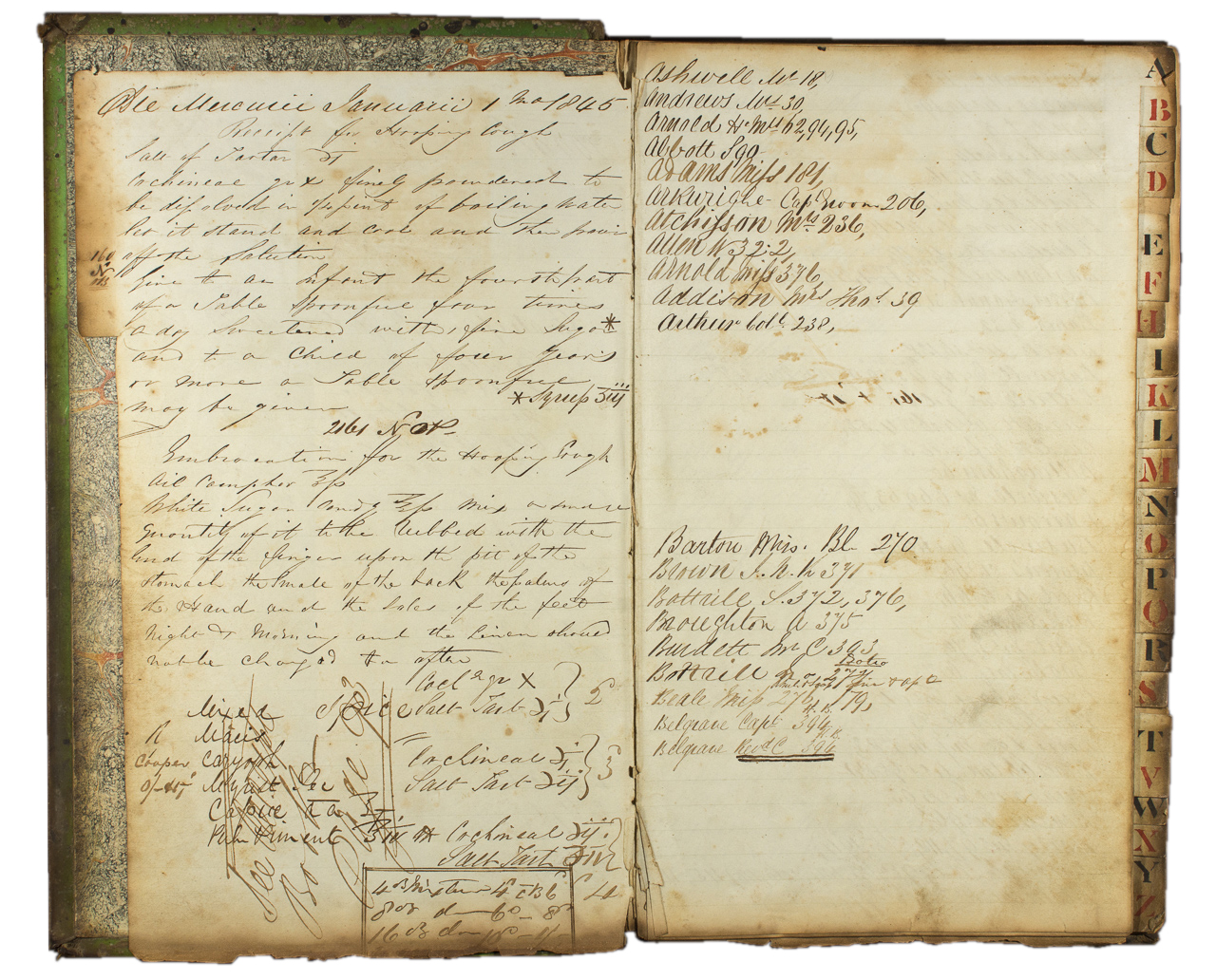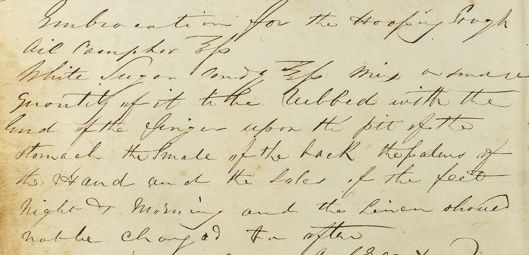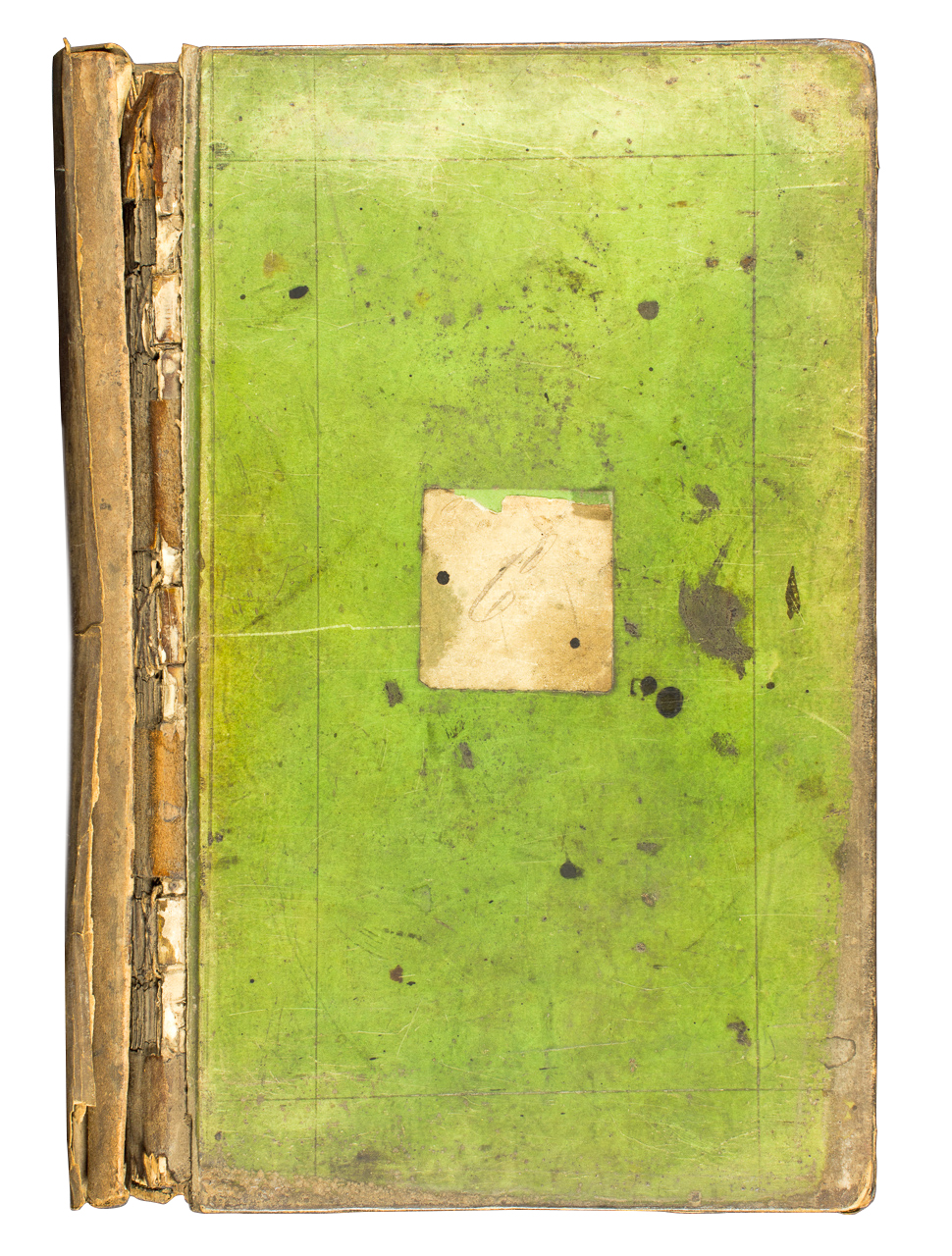Professor Weiss discovers a 170-year-old cure for whooping cough.
Healthcare has changed a lot since 1845. Only a limited range of medication was available to early Victorians; prescriptions for common illnesses and ailments were routinely prepared and sold by druggists. Based on 19th-century misconceptions relating to human physiology, these remedies, usually formulated to the druggist’s own recipe, were of questionable efficacy.
With a UK epidemic of whooping cough occurring in 2012, there has been renewed interest in this highly contagious disease. Since the bacteria causing whooping cough, also known as pertussis, were not discovered until the early 20th century (and a vaccine not available until the 1950s) earlier treatments for whooping cough were largely attempts to relieve symptoms.

In this 1845 prescription book entry, the treatment for ‘hooping cough’ describes dissolving salt of tartar (potassium carbonate) and cochineal in boiling water. The instruction is to let the solution stand and cool, and then ‘give to an infant the fourth part of a tablespoonful four times a day, sweetened with fine sugar or syrup’. Cochineal, derived from the coccus cacti insect, has been used most commonly as a red dye and nowadays is still available in some homeopathic cough remedies.

In the record, whooping cough not only appears to be treated with this liquid but also with an embrocation, a liquid for rubbing onto the skin using, in this case, oil of camphor and sugar. Interestingly, this record describes how this embrocation is to be rubbed with the end of the finger upon the pit of the stomach, the small of the back, the palms of the hand and the soles of the feet, night and morning – and the (bed) linen should not be changed that often!
